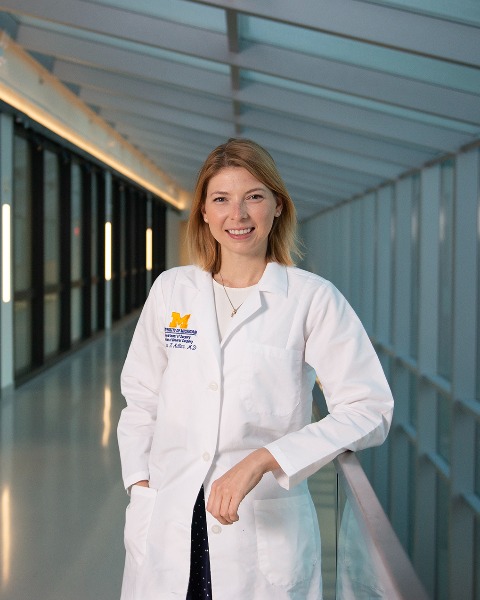Adult Cardiac
Category: Scientific Abstract: Oral/Poster
Impact of Pacemaker Implantation on Mortality Following Mitral Valve Surgery
J. Kathryn. Millar1, C. Wagner1, S. Bolling2, J. Wolverton3, R. Hawkins3, G. Ailawadi4
1University of Michigan, Ypsilanti, Michigan 2University of Michigan Hospital, Ann Arbor, Michigan 3University of Michigan, Ann Arbor, Michigan 4The University of Michigan Cardiovascular Center, Ann Arbor, Michigan
1University of Michigan, Ypsilanti, Michigan 2University of Michigan Hospital, Ann Arbor, Michigan 3University of Michigan, Ann Arbor, Michigan 4The University of Michigan Cardiovascular Center, Ann Arbor, Michigan

Jessica Kathryn Millar, MD (she/her/hers)
House Officer- General Surgery
University of Michigan
Ypsilanti, Michigan, United States
Presenting Author(s)
Disclosure(s):
Jessica Kathryn Millar, MD: No financial relationships to disclose
Purpose: Conduction disorders requiring permanent pacemaker implantation (PPM) following cardiac surgery have been associated with morbidity and reduced long-term survival. However, data regarding PPM after mitral valve surgery has been limited. We sought to evaluate the impact of PPM on long-term survival in patients requiring PPM following mitral valve surgery.
Methods: All patients who underwent mitral valve surgery from 2010-2022 at our institution were considered for analysis. Patients with preoperative PPM or who underwent aortic valve procedures were excluded. Patients were stratified by PPM or no PPM following their index operation. The primary outcome was long-term survival. To compare resource utilization secondary outcomes included ICU length of stay, need for re-operation, and readmission. Student’s t-test and chi-square analysis was performed to determine pre-operative risk factors for PPM and post-operative complications. Kaplan-Meier analysis and Cox proportional hazard models were utilized to assess the association between PPM implantation and long-term survival.
Results: A total of 4,690 patients underwent mitral valve surgery, 245 (5.2%) of whom required postoperative PPM. Patients requiring PPM were older (68±13.1 vs 63±13.8; p < 0.001), more likely to have undergone previous cardiac surgery intervention (47.6% vs 35.3%; P < 0.001), and less likely to undergo isolated mitral valve surgery (10.2% vs 28.6%; p < 0.001) (Table 1). Patients who underwent PPM had longer initial ICU lengths of stay (128 +/- 231 hours vs 52 +/- 143; p< 0.001), ICU readmissions (19.6% vs 10.8%; p< 0.001), and need for cardiac re-operation (1.2% vs 0.3%; p= 0.02). There was no difference in readmission (13.9% vs 14.5%). Mean follow up time was 4.4 +/- 5.2 years. On Kaplan-Meier analysis (Figure 1A) PPM was associated with decreased 10-year survival (p < 0.001). On unadjusted Cox regression analysis, PPM was associated with decreased 10-year survival (HR: 1.5, 95% CI: 1.2-1.8, p < 0.001). After adjusting for pre-operative risk factors and concomitant operations, need for non-cardiac re-operation (HR: 3.8; 95% CI: 2.1-6.9; p < 0.001) and readmission (HR: 2.2; 95% CI: 1.4-3.3; p < 0.001), but not PPM (HR: 0.7; 95% CI: 0.4-1.3. p=0.28), were associated with worse long-term survival (Figure 1B).
Conclusion: Implantation of a permanent pacemaker following mitral valve surgery is not associated with worse adjusted long-term survival. Patients requiring PPM have worse clinical status at baseline. These findings demonstrate the importance of identify patients at risk for PPM to facilitate perioperative planning and inform clinical decision making to improve resource utilization and overall survival.
Identify the source of the funding for this research project: This project was supported by grant number T32-HL007853 from the from the National Heart, Lung, and Blood Institute (NHLBI) (J. Millar, PI: David J. Pinksy,MD).
